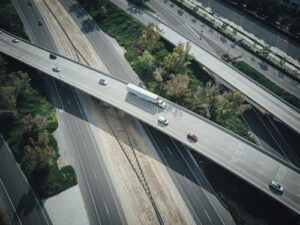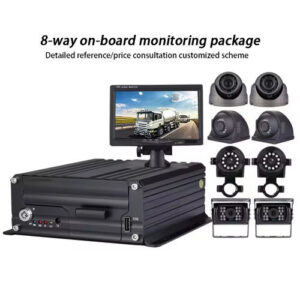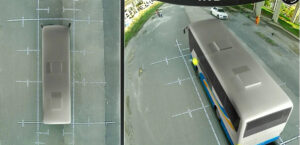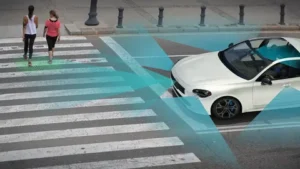Introduction to Intelligent Video Surveillance
Intelligent video surveillance represents a significant advancement in the realm of security technology, particularly for public transportation systems such as buses. Unlike traditional surveillance methods that rely purely on static cameras, intelligent video surveillance leverages sophisticated technologies, including artificial intelligence (AI) and machine learning. These systems are designed to provide real-time monitoring, improving the ability to detect unusual activities and potential threats.
A key feature of intelligent video surveillance is its capacity for automated data analysis. By utilizing AI algorithms, these systems can analyze video feeds more efficiently than a human operator, identifying patterns and behaviors that may indicate risks. For instance, if a group of individuals is lingering near a bus stop for an extended period, the system can alert authorities to investigate further. This proactive approach to security represents a paradigm shift from reactive measures commonly employed in legacy systems.
Additionally, intelligent video surveillance solutions can integrate various technologies such as facial recognition, license plate recognition, and anomaly detection. These capabilities not only enhance the overall security of public transport but also aid in streamlining operations. For example, transportation authorities can utilize insights gleaned from video analytics to optimize bus routes based on passenger flow and demand, thereby improving service efficiency.
The evolution from traditional video surveillance to intelligent systems reflects an increasing recognition of the importance of safety in public spaces. In light of growing concerns regarding urban safety and crime, intelligent video surveillance has emerged as an essential component in protecting both passengers and transit workers. As these technologies continue to evolve, they will undoubtedly play a critical role in shaping secure transport solutions worldwide.
The Importance of Video Surveillance in Public Transport
In recent years, the importance of video surveillance in public transport, particularly for buses, has escalated significantly. With the increasing number of passengers relying on public transportation systems, ensuring their safety has become a top priority for service providers. Video surveillance systems offer a comprehensive solution to enhance passenger safety through constant monitoring of bus interiors and surrounding areas.
One of the primary benefits of implementing intelligent video surveillance solutions is the notable reduction in crime. Statistics indicate that public transport-related crimes, such as theft, vandalism, and assault, can be substantially decreased in areas equipped with effective surveillance cameras. The presence of visible cameras serves as a deterrent for potential offenders, as they recognize that their actions are being recorded. This deterrent effect not only strengthens the sense of security among passengers but also promotes responsible behavior.
Moreover, video surveillance plays a crucial role in incident investigations. In the event of an altercation or accident, footage captured by cameras can provide vital evidence, facilitating a thorough analysis of the situation. This evidence is instrumental in resolving disputes, ensuring that appropriate actions are taken against wrongdoers, and enhancing overall accountability within the transit system. Additionally, the ability to review recorded footage can assist in training staff to effectively respond to various situations.
Furthermore, integrating advanced video analytics into surveillance systems can enhance the capabilities of public transport monitoring. These systems can detect unusual behavior patterns and alert security personnel in real time, thus allowing for immediate intervention when necessary. As cities continue to invest in infrastructure improvements, incorporating intelligent video surveillance as a standard practice in bus networks is essential for fostering a safe and secure environment for all passengers. Consequently, public transport systems can not only protect their users but also increase ridership confidence in their safety measures.
How Intelligent Surveillance Works
Intelligent video surveillance systems function through a combination of advanced technologies designed to enhance safety and security in public transportation, particularly buses. At the core of these systems are high-definition cameras equipped with facial recognition capabilities. These cameras are strategically placed to monitor various angles and areas within and around the bus, ensuring comprehensive coverage. The facial recognition technology is particularly significant as it can track known individuals, alerting operators to potential security threats or enabling prompt action in case of emergencies.
In addition to facial recognition, intelligent surveillance solutions incorporate motion detectors, which are sensitive to movement in their designated fields. These detectors can trigger alerts when unusual activity occurs, such as unauthorized individuals boarding the bus or loitering in nearby areas. By promptly identifying such movements, the system aids in preventing incidents before they escalate. This feature is especially important in ensuring the safety of passengers and staff alike.
The data generated by the surveillance cameras and detectors is stored securely in cloud-based or local servers, allowing for easy retrieval and analysis. The application of artificial intelligence (AI) within these systems significantly enhances their efficacy. AI algorithms analyze the footage in real-time, quickly identifying patterns of behavior that may indicate safety concerns, such as physical confrontations or individuals exhibiting suspicious actions. The ability to analyze vast amounts of data instantaneously leads to improved response times, allowing law enforcement or security personnel to react swiftly when necessary.
Overall, intelligent video surveillance solutions for buses bridge the gap between technology and public safety, creating a robust environment that fosters security while minimizing risks. By leveraging facial recognition, motion detection, and AI analytics, these systems ensure that bus transportation remains safe for all users.
Benefits of Implementing Intelligent Surveillance on Buses
The implementation of intelligent video surveillance solutions on buses presents a multitude of benefits that enhance security and operational efficiency. One of the primary advantages is the enhanced security provided for both passengers and drivers. With advanced monitoring capabilities, these surveillance systems can detect and respond to potentially dangerous situations in real time. Presence of visible cameras not only acts as a deterrent to criminal activities, such as theft or vandalism, but also fosters a safer environment for individuals commuting via public transport.
Moreover, the adoption of intelligent surveillance systems contributes significantly to the reduction of vandalism and theft. As these systems often employ high-resolution imaging and real-time analytics, any incidents are promptly recorded and analyzed, thereby increasing the likelihood of identifying and prosecuting offenders. This aspect not only safeguards public property but cultivates a sense of accountability among passengers, ensuring better respect for communal resources.
Another considerable benefit of intelligent video surveillance on buses is the improvement in operational efficiency. These systems can collect and analyze data related to passenger behaviors and patterns, which can then be utilized for optimizing routes and schedules. Insightful analytics enable transport authorities to make informed decisions, ultimately leading to improved service delivery tailored to passenger needs. When surveillance data is integrated with existing transport management systems, it results in a seamless flow of information that can lead to enhanced overall performance.
In essence, the strategic deployment of intelligent video surveillance not only uplifts the security aspects of bus transportation but also provides actionable insights that drive future improvements. It enhances the passenger experience while reinforcing the importance of safety in public transport systems.
Challenges and Considerations in Deploying Surveillance Systems
The implementation of intelligent video surveillance solutions on buses presents a range of challenges that organizations must navigate to ensure effective public safety measures. One of the foremost concerns is privacy. The increased monitoring of individuals within public transport can lead to apprehension about surveillance intruding on personal liberties. Organizations must strike a balance between enhancing safety and maintaining the privacy rights of passengers. Transparent communication about how video data will be used, shared, and stored is essential to mitigate these concerns.
Data security is another pivotal consideration. Surveillance systems collect and store vast amounts of footage, which can become attractive targets for cybercriminals. Organizations must invest in robust cybersecurity measures to safeguard sensitive information against potential breaches. Regular audits and updates to security protocols are essential to ensure ongoing protection and compliance with data protection regulations.
Additionally, the financial implications of deploying surveillance systems cannot be overlooked. High initial costs associated with purchasing advanced imaging technologies, installation, and ongoing maintenance can be prohibitive. It is vital for organizations to conduct a thorough cost-benefit analysis, weighing potential savings from reduced incidents against the financial investment required for installation and technology upkeep. Moreover, organizations must also consider infrastructural changes that may be necessary to accommodate new surveillance technologies, such as improved internet connectivity and storage capacities.
Finally, effective management and analysis of the surveillance data necessitate well-trained staff. Organizations must ensure that their personnel are equipped with the knowledge and skills to interpret the data generated by intelligent surveillance systems. Training programs should focus on data analysis techniques and the ethical implications tied to surveillance, allowing staff to contribute meaningfully to safety objectives and public trust.
Regulatory and Privacy Issues
The implementation of intelligent video surveillance solutions in public transport, particularly on buses, is increasingly relevant in discussions about public safety and privacy rights. As these systems become more prevalent, transport authorities must navigate various legal and ethical implications associated with video surveillance. A primary consideration centers around existing laws governing privacy and data protection. Many countries enforce stringent regulations that dictate how surveillance footage can be collected, stored, and used.
Legislative frameworks such as the General Data Protection Regulation (GDPR) in Europe set clear boundaries regarding personal data usage, emphasizing the necessity of obtaining consent from individuals being monitored. Transport authorities are thus tasked with ensuring that any deployment of video surveillance systems complies with these laws, which may require transparency about how video data is utilized, including informing passengers of surveillance presence through clear signage.
The ethical dimensions of surveillance cannot be overlooked, particularly regarding the balance between public safety and individual privacy rights. While the primary goal of video surveillance in public transport is to enhance safety for passengers, there is an inherent risk of infringing on privacy. Authority figures must find a way to build public trust by being transparent about the surveillance that takes place and by actively addressing concerns that arise regarding data misuse or breach of privacy.
Consequently, transport authorities can navigate these complex regulations by investing in robust data protection measures, facilitating regular audits, and establishing clear policies around data retention and sharing. Engaging with stakeholders, including the public, can also foster a collaborative approach to balancing safety and privacy effectively. By prioritizing compliance and ethical considerations, transport authorities can utilize intelligent video surveillance solutions to create a secure environment for all passengers while respecting their rights.
Case Studies: Successful Implementation of Surveillance Solutions
The implementation of intelligent video surveillance solutions on buses has been witnessing significant success across various regions, emphasizing the importance of safety and operational efficiency in public transportation. A prime example can be observed in a transit agency in New York City, which integrated smart surveillance technology to enhance passenger safety. The agency aimed to tackle the issue of vandalism and provide a safer environment for commuters. By installing high-definition cameras, real-time monitoring systems, and advanced analytics software, they were able to detect abnormal behaviors and respond promptly to incidents. The outcome of this initiative was a reported 30% decrease in vandalism-related incidents within the first year of deployment.
In another case, a public transport authority in London sought to improve the operational efficiency of their bus services while ensuring the safety of passengers. They adopted a combination of video surveillance and AI-driven analytics to monitor bus routes in real-time. The key objective was to reduce the incidence of unsafe driving behaviors. This implementation led to identifying and addressing frequent routes with high-risk behavior among drivers. Consequently, there was a notable improvement in overall bus safety metrics, and operational costs were reduced by 15% due to fewer accidents and improved driver accountability.
A case study from a transit system in Sydney illustrates how intelligent surveillance solutions can also aid in emergency response. Their strategy involved equipping buses with mobile video surveillance. This technology allowed transit operators to monitor live footage, which played a crucial role during an emergency situation involving a medical incident on board. The ability to relay real-time information significantly expedited the response from medical services. As a result, the transit system reported increased confidence in their ability to handle emergencies and safeguard passenger welfare.
These case studies highlight the diverse applications and beneficial outcomes of implementing intelligent video surveillance solutions on buses, contributing to enhanced public safety and operational enhancements across transit systems.
Future Trends in Video Surveillance for Public Transport
The landscape of video surveillance for public transport is rapidly evolving, with several emerging technologies poised to redefine how safety and security are managed in this sector. One of the most noteworthy trends is the incorporation of advanced analytics. With the ability to process vast amounts of data in real-time, these systems can detect unusual patterns or behaviors, alerting authorities before incidents escalate. This proactive approach is invaluable in ensuring public safety on buses and other forms of transport.
Additionally, the integration of Internet of Things (IoT) devices is reshaping surveillance solutions. By connecting cameras and sensors directly to a centralized network, transport authorities can monitor multiple locations simultaneously. This interconnected environment not only enhances situational awareness but also facilitates immediate access to critical information, enabling swift responses to any irregularities. Furthermore, IoT-enabled devices can gather data that assists in long-term planning and resource allocation, ultimately leading to more efficient operations.
Another significant trend is the shift toward cloud computing in video surveillance systems. By utilizing the cloud, transport operators can store and access vast amounts of video footage without the constraints of traditional on-premises hardware. This change not only reduces costs but also enhances flexibility, allowing for easy scalability and improved data retention policies. Transport agencies can leverage cloud computing to integrate additional functionalities such as facial recognition and license plate recognition, further bolstering security measures.
As video surveillance solutions advance, there is a corresponding emphasis on enhancing the passenger experience. Improved safety protocols instilled by these technologies provide commuters with peace of mind, likely leading to increased public trust in utilizing buses and other public transport systems. The combination of advanced analytics, IoT integration, and cloud computing outlines a promising future for the role of video surveillance in public transport systems.
Conclusion
In summary, the integration of intelligent video surveillance solutions within public bus systems is proving essential for enhancing safety and operational efficiency. As discussed, these advanced technologies not only provide real-time monitoring capabilities to deter crime and address incidents effectively but also aid in ensuring passenger safety through comprehensive coverage of bus interiors and exteriors. The deployment of such systems has been shown to decrease vandalism, improve driver accountability, and boost overall public confidence in using bus transportation.
These intelligent systems leverage sophisticated analytics, enabling transport authorities to identify patterns and respond proactively to safety threats. Through facial recognition, behavioral analysis, and incident reporting functionalities, they are transforming the landscape of public transport security. Furthermore, improving situational awareness for bus operators ensures swift responses when emergencies arise, thereby safeguarding passengers and personnel alike. The addition of video surveillance helps in fostering a safer environment, encouraging more users to opt for public transport as a viable alternative to private vehicles.
Therefore, it is imperative for transport authorities and municipal administrations to prioritize investment in intelligent video surveillance solutions. By doing so, they can significantly enhance the safety of public buses while simultaneously bolstering operational efficiency. The seamless integration of this technology marks a forward step towards modernizing public transport and ensuring a secure travel experience for all. With increasing concerns over public safety, now is the time for stakeholders to consider how intelligent video surveillance can play a pivotal role in shaping a safer and more efficient public transport system.






